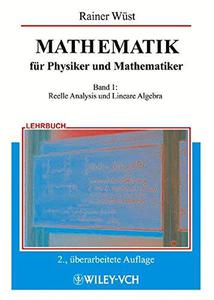
Mathematik fur Physiker und Mathematiker: Reelle Analysis und Lineare Algebra, Volume 1, 2. Auflage By Prof. Dr. rer. nat. Rainer Wust(auth.)
2002 | 591 Pages | ISBN: 3527404023 | PDF | 9 MB
Content: Chapter 1 Einiges uber Logik (pages 1-18): Chapter 2 Relationen - Abbildungen (pages 19-28): Chapter 3 Zahlen (pages 29-60): Chapter 4 Der Grenzwertbegriff (pages 61-148): Chapter 5 Differentiation (pages 149-226): Chapter 6 Integration (pages 227-307): Chapter 7 Limesvertauschungen (pages 308-340): Chapter 8 Lineare Raume (pages 341-385): Chapter 9 Affine Teilraume (pages 386-396): Chapter 10 Lineare Abbildungen und Matrizen (pages 397-438): Chapter 11 Determinanten (pages 439-466): Chapter 12 Lineare Gleichungssysteme (pages 467-484): Chapter 13 Transformation von Koordinaten-Matrixdarstellung linearer Abbildungen (pages 485-499): Chapter 14 Dualraume-Multilinearformen-Tensoren (pages 500-519): Chapter 15 Eigenwerte linearer Abbildungen und Matrizen (pages 520-547):

Mathematik fur Physiker und Mathematiker: Analysis im Mehrdimensionalen und Einfuhrungen in Spezialgebiete, Volume 2, 2. Auflage By Prof. Dr. rer. nat. Rainer Wust(auth.)
2002 | 717 Pages | ISBN: 3527404031 | PDF | 23 MB
Content: Chapter 16 Abbildungen aus dem ?m in den ?n (pages 581-609): Chapter 17 Differentiation bei Abbildungen aus ?m nach ?n (pages 610-686): Chapter 18 Kurvenintegrale (pages 687-745): Chapter 19 Integration im ?m (pages 746-832): Chapter 20 Oberflachenintegrale (pages 833-859): Chapter 21 Integralsatze (pages 860-903): Chapter 22 Funktionentheorie (pages 904-978): Chapter 23 Gewohnliche Differentialgleichungen: Losungen und Losungsmethoden bei speziellen Typen (pages 979-1011): Chapter 24 Existenz und Eindeutigkeit von Losungen von Anfangswertproblemen (pages 1012-1036): Chapter 25 Lineare Differentialgleichungssysteme 1. Ordnung (pages 1037-1069): Chapter 26 (Pra?) Hilbert?Raume, Weierstra?'scher Approximationssatz, Fourier?Reihen und Fourier?Transformation (pages 1070-1140): Chapter 27 Lineare partielle Differentialgleichungen zweiter Ordnung (pages 1141-1209):
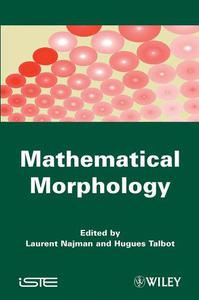
Mathematical Morphology: From Theory to Applications By Laurent Najman, Hugues Talbot (eds.)
2010 | 507 Pages | ISBN: 1848212151 | PDF | 15 MB
Mathematical Morphology allows for the analysis and processing of geometrical structures using techniques based on the fields of set theory, lattice theory, topology, and random functions. It is the basis of morphological image processing, and finds applications in fields including digital image processing (DSP), as well as areas for graphs, surface meshes, solids, and other spatial structures. This book presents an up-to-date treatment of mathematical morphology, based on the three pillars that made it an important field of theoretical work and practical application: a solid theoretical foundation, a large body of applications and an efficient implementation.The book is divided into five parts and includes 20 chapters. The five parts are structured as follows:Part I sets out the fundamental aspects of the discipline, starting with a general introduction, followed by two more theory-focused chapters, one addressing its mathematical structure and including an updated formalism, which is the result of several decades of work.Part II extends this formalism to some non-deterministic aspects of the theory, in particular detailing links with other disciplines such as stereology, geostatistics and fuzzy logic.Part III addresses the theory of morphological filtering and segmentation, featuring modern connected approaches, from both theoretical and practical aspects.Part IV features practical aspects of mathematical morphology, in particular how to deal with color and multivariate data, links to discrete geometry and topology, and some algorithmic aspects; without which applications would be impossible.Part V showcases all the previously noted fields of work through a sample of interesting, representative and varied applications.Content: Chapter 1 Introduction to Mathematical Morphology (pages 1-33): Laurent Najman and Hugues TalbotChapter 2 Algebraic Foundations of Morphology (pages 35-80): Christian Ronse and Jean SerraChapter 3 Watersheds in Discrete Spaces (pages 81-107): Gilles Bertrand, Michel Couprie, Jean Cousty and Laurent NajmanChapter 4 An Introduction to Measurement Theory for Image Analysis (pages 109-131): Hugues Talbot, Jean Serra and Laurent NajmanChapter 5 Stochastic Methods (pages 133-153): Christian LantuejoulChapter 6 Fuzzy Sets and Mathematical Morphology (pages 155-176): Isabelle BlochChapter 7 Connected Operators based on Tree Pruning Strategies (pages 177-198): Philippe SalembierChapter 8 Levelings (pages 199-228): Jean Serra, Corinne Vachier and Fernand MeyerChapter 9 Segmentation, Minimum Spanning Tree and Hierarchies (pages 229-261): Fernand Meyer and Laurent NajmanChapter 10 Distance, Granulometry and Skeleton (pages 263-289): Michel Couprie and Hugues TalbotChapter 11 Color and Multivariate Images (pages 291-321): Jesus Angulo and Jocelyn ChanussotChapter 12 Algorithms for Mathematical Morphology (pages 323-353): Thierry Geraud, Hugues Talbot and Marc Van DroogenbroeckChapter 13 Diatom Identification with Mathematical Morphology (pages 355-365): Michael Wilkinson, Erik Urbach, Andre Jalba and Jos RoerdinkChapter 14 Spatio?Temporal Cardiac Segmentation (pages 367-373): Jean Cousty, Laurent Najman and Michel CouprieChapter 15 3D Angiographic Image Segmentation (pages 375-383): Benoit Naegel, Nicolas Passat and Christian RonseChapter 16 Compression (pages 385-391): Beatriz Marcotegui and Philippe SalembierChapter 17 Satellite Imagery and Digital Elevation Models (pages 393-405): Pierre SoilleChapter 18 Document Image Applications (pages 407-420): Dan Bloomberg and Luc VincentChapter 19 Analysis and Modeling of 3D Microstructures (pages 421-444): Dominique JeulinChapter 20 Random Spreads and Forest Fires (pages 445-455): Jean Serra

Dr. Remorov, Anna Remorova, "Math Puzzles for Smart Kids Book 1: Math Challenging Game Book, Encrypted Messages, Logic, and Brain Teasers for Grade 1 - 4"
English | 2021 | ASIN: B08Y4RLXRN, B08Y5BWP5J | EPUB | pages: 29 | 1.8 mb
Check "Math Mazes" and "Math Mazes Book 2" for more math mazes in the series.NEW: Encrypted messages, Numbering mazesThis book is designed for children growing up to be intelligent and smart, for children who like puzzles, math, and science. The book provides the first steps to study math to improve kids' problem-solving skills. The book presents puzzles in the form of encrypted messages, numbering mazes, and math mazes using basic mathematical operations: addition and subtraction.
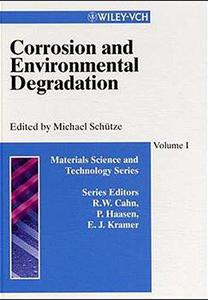
Materials Science and Technology: A Comprehensive Treatment: Corrosion and Environmental Degradation, Volumes I+II By
2000 | 1082 Pages | ISBN: 3527299718 | PDF | 27 MB
Corrosion and corrosion protection is one of most important topics in applied materials science. Corrosion science is not only important from an economic point of view, but, due to its interdisciplinary nature combining metallurgy, materials physics and electrochemistry, it is also of high scientific interest. Nowadays corrosion science even gets new impetus from surface science and polymer chemistry. This two-volume reference work belonging to the well renown series Materials Science and Tehcnology provides the reader with a sound and broad survey on the whole subject - from the fundamentals to the latest research results. Written by a team of international top-experts it will become an indispensable reference for any materials scientist, physicist or chemist involved in corrosion science. Content: Chapter 1 Phenomenological and Electrochemical Fundamentals of Corrosion (pages 1-66): Hans?Henning StrehblowChapter 2 Fundamentals of High Temperature Corrosion (pages 67-130): Michael SchutzeChapter 3 Passivity of Metals and Alloys (pages 131-169): Philippe Marcus and Vincent MauriceChapter 4 Microbial Corrosion (pages 171-205): Wolfgang SandChapter 5 Environment Sensitive Fracture (pages 207-263): Thierry Magnin and Pierre CombradeChapter 6 Effect of Multiphase Flow on Corrosion (pages 265-284): Madan Gopal and W. Paul JepsonChapter 7 Novel Electrochemical Techniques in Corrosion Research (pages 285-381): Guido Grundmeier, Klaus?Michael Juttner and Martin StratmannChapter 8 Cathodic and Anodic Protection (pages 383-470): Romuald Juchniewicz, Jezmar Jankowski and Kazimierz DarowickiChapter 9 Environmentally Friendly Corrosion Inhibitors (pages 471-537): Erika Kalman, Ilona Felhosi, Franciska H. Karman, Istvan Lukovits, Judit Telegdi and Gabor PalinkasChapter 1 Corrosion of Steels (pages 1-68): Michael HagenChapter 2 Corrosion of Non?Ferrous Alloys. I. Nickel?, Cobalt?, Copper?, Zirconium?and Titanium?Based Alloys (pages 69-111): Raul B. RebakChapter 3 Corrosion of Non?Ferrous Alloys. II. Aluminum?Based Alloys (pages 113-130): Osami SeriChapter 4 Corrosion of Non?Ferrous Alloys. III. Magnesium Alloys (pages 131-171): Guangling Song and Andrejs AtrensChapter 5 High?Temperature Corrosion of Metallic Alloys and Coatings (pages 173-228): Brian GleesonChapter 6 High?Temperature Oxidation and Corrosion of Intermetallics (pages 229-325): M. P. Brady, B. A. Pint, P. F. Tortorelli, I. G. Wright and R. J. Hanrahan Jr.Chapter 7 Corrosion of Ceramic Materials (pages 327-388): Elizabeth J. Opila and Nathan S. JacobsonChapter 8 Corrosion of Steel in Concrete (pages 389-436): B. ElsenerChapter 9 Corrosion Engineering of Electronic and Photonic Devices (pages 437-467): R. B. Comizzoli, R. P. Frankenthal and J. D. SinclairChapter 10 Degradation and Stabilization of Polymers (pages 469-507): N. C. Billingham
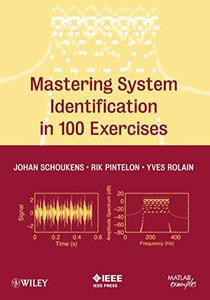
Mastering System Identification in 100 Exercises By Johan Schoukens, Rik Pintelon, Yves Rolain(auth.)
2012 | 277 Pages | ISBN: 0470936983 | PDF | 10 MB
Systems identification is a general term used to describe mathematical tools and algorithms that build dynamical models from measured data. Mastering System Identification in 100 Exercises takes readers step by step through a series of MATLAB exercises that teach how to measure and model linear dynamic systems in the presence of nonlinear distortions from a practical point of view. Each exercise is followed by a short discussion illustrating what lessons can be learned by the reader.The book, with its learn-by-doing approach, also includes:State-of-the-art system identification methods, with both time and frequency domain system identification methods?including the pros and cons of eachSimple writing style with numerous examples and figuresDownloadable author-programmed MATLAB files for each exercise?with detailed solutionsLarger projects that serve as potential assignmentsCovering both classic and recent measurement and identifying methods, this book will appeal to practicing engineers, scientists, and researchers, as well as master's and PhD students in electrical, mechanical, civil, and chemical engineering.Content: Chapter 1 Identification (pages 1-27): Chapter 2 Generation and Analysis of Excitation Signals (pages 29-53): Chapter 3 FRF Measurements (pages 55-90): Chapter 4 Identification of Linear Dynamic Systems (pages 91-136): Chapter 5 Best Linear Approximation of Nonlinear Systems (pages 137-181): Chapter 6 Measuring the Best Linear Approximation of a Nonlinear System (pages 183-238): Chapter 7 Identification of Parametric Models in the Presence of Nonlinear Distortions (pages 239-254):

Mastering Palo Alto Networks:
Build, configure, and deploy network solutions for your infrastructure using features of PAN-OS, 2nd Edition
English | 2022 | ISBN: 1803241411 | 636 Pages | PDF EPUB (True) | 84 MB
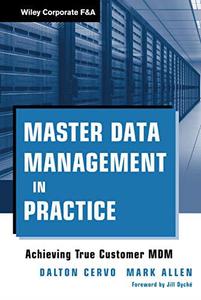
Master Data Management in Practice: Achieving True Customer MDM By Dalton Cervo, Mark Allen(auth.)
2011 | 257 Pages | ISBN: 0470910550 | PDF | 4 MB
In this book, authors Dalton Cervo and Mark Allen show you how to implement Master Data Management (MDM) within your business model to create a more quality controlled approach. Focusing on techniques that can improve data quality management, lower data maintenance costs, reduce corporate and compliance risks, and drive increased efficiency in customer data management practices, the book will guide you in successfully managing and maintaining your customer master data. You'll find the expert guidance you need, complete with tables, graphs, and charts, in planning, implementing, and managing MDM.Content: Chapter 1 Defining Your MDM Scope and Approach (pages 7-28): Chapter 2 Establishing Effective Ownership (pages 29-38): Chapter 3 Priming the MDM Engine (pages 39-63): Chapter 4 Data Governance (pages 65-94): Chapter 5 Data Stewardship (pages 95-110): Chapter 6 Data Quality Management (pages 111-140): Chapter 7 Data Access Management (pages 141-161): Chapter 8 Data Maintenance and Metrics (pages 163-190): Chapter 9 Maturing Your MDM Model (pages 191-199): Chapter 10 Creating the Customer 360° View (pages 201-214): Chapter 11 Surviving Organizational Change (pages 215-223): Chapter 12 Beyond Customer MDM (pages 225-236):

Marvel Year by Year: A Visual History, New Edition by Tom DeFalco, Peter Sanderson, Tom Brevoort, Matthew K. Manning, Stephen Wiacek
English | July 26th, 2022 | ISBN: 0744054516 | 400 pages | True EPUB | 415.51 MB
A new edition of the most comprehensive history of Marvel Comics ever published.
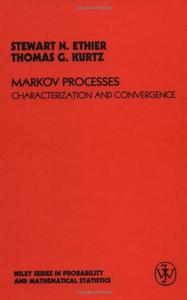
Markov Processes: Characterization and Convergence By Stewart N. Ethier, Thomas G. Kurtz(auth.)
2005 | 550 Pages | ISBN: 0471081868 | PDF | 13 MB
The Wiley-Interscience Paperback Series consists of selected books that have been made more accessible to consumers in an effort to increase global appeal and general circulation. With these new unabridged softcover volumes, Wiley hopes to extend the lives of these works by making them available to future generations of statisticians, mathematicians, and scientists. "[A]nyone who works with Markov processes whose state space is uncountably infinite will need this most impressive book as a guide and reference." -American Scientist "There is no question but that space should immediately be reserved for [this] book on the library shelf. Those who aspire to mastery of the contents should also reserve a large number of long winter evenings." -Zentralblatt fur Mathematik und ihre Grenzgebiete/Mathematics Abstracts "Ethier and Kurtz have produced an excellent treatment of the modern theory of Markov processes that s useful both as a reference work and as a graduate textbook." -Journal of Statistical Physics Markov Processes presents several different approaches to proving weak approximation theorems for Markov processes, emphasizing the interplay of methods of characterization and approximation. Martingale problems for general Markov processes are systematically developed for the first time in book form. Useful to the professional as a reference and suitable for the graduate student as a text, this volume features a table of the interdependencies among the theorems, an extensive bibliography, and end-of-chapter problems. Content: Chapter 1 Operator Semigroups (pages 6-48): Chapter 2 Stochastic Processes and Martingales (pages 49-94): Chapter 3 Convergence of Probability Measures (pages 95-154): Chapter 4 Generators and Markov Processes (pages 155-274): Chapter 5 Stochastic Integral Equations (pages 275-305): Chapter 6 Random Time Changes (pages 306-336): Chapter 7 Invariance Principles and Diffusion Approximations (pages 337-364): Chapter 8 Examples of Generators (pages 365-385): Chapter 9 Branching Processes (pages 386-409): Chapter 10 Genetic Models (pages 410-451): Chapter 11 Density Dependent Population Processes (pages 452-467): Chapter 12 Random Evolutions (pages 468-491):


